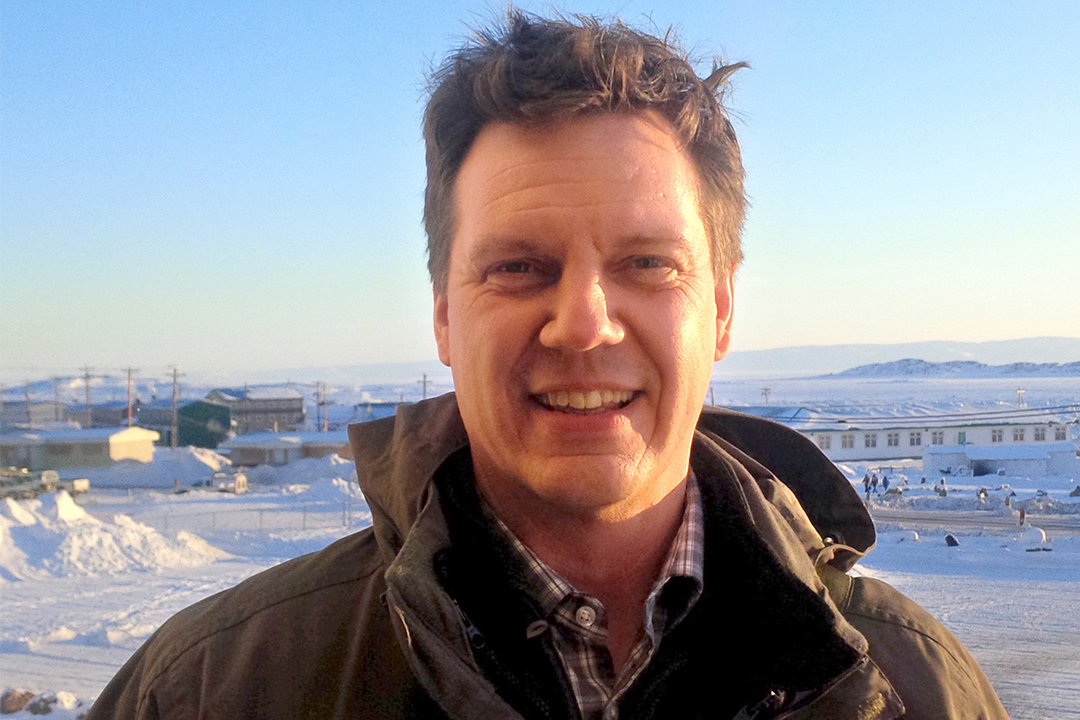Ending energy dependence
Providing education and access to services for remote communities is a daunting task. Not all communities have the same opportunities, but the University of Saskatchewan has faculty and alumni who work on a daily basis to reduce the inequity between the north and the south.
By CHELSEA LASKOWSKISchool of Environment and Sustainability professor and Fulbright Scholar Greg Poelzer envisions a future where communities in northern Saskatchewan have access to sustainable energy to meet their need.
“What few people in Saskatchewan realize or even know is that Saskatchewan has two power grids—a northern grid and a southern grid that are not connected to one another,” said Poelzer. “Moreover the northern grid is built on the Precambrian shield and is not grounded, leading to frequents power outages.”
These frequent power outages are often caused by lightning or winter storms, which can last upwards of 24 hours. In a sustainable future, there would be local generation of energy sources and communities would be on micro-grids that protect them when the northern grid is down.
The vision Poelzer has is not just a pipe dream. He can easily recite a long list of reasons why projects like solar power and biomass—which turns wood waste into power and energy – are not only feasible, but desirable, for all sectors of society. Introducing these methods would help the province move towards its goal of increasing renewable energy use by 50 per cent by 2030; and the federal government would benefit from moving closer to its Paris Climate Agreement goals.

But the needs of northerners are first and foremost in Poelzer’s rationale for renewables, which he sees as a potential way to decrease the disparity in wealth between the provincial north and the rest of Canada.
“You're sitting with this enormous opportunity for economic development for employment, wealth generation in northern communities,” he said.
Luckily, no one needs to reinvent the wheel in finding those energy solutions. Instead, they can look to other jurisdictions and adapt them to the unique needs of Saskatchewan’s North.
The Netherlands and northern Sweden are 15 to 20 years ahead of Canada in renewable energy deployment, Poelzer said, and he is particularly interested in using Alaska as a guide for northern Saskatchewan because they have similar climates and remote communities.
“Everyone thinks of two things about Alaska: Sarah Palin and oil. [They] don't realize that [Alaska is] actually a world leader in micro-grid deployment and renewable energy deployment in severe weather conditions in off-grid communities that are run and led by Indigenous people,” Poelzer said.
Just last year, Poelzer and a colleague from the University of Alaska’s Centre of Energy and Power went to Deschambault Lake and Pelican Narrows to scope out the most feasible options for renewable energy deployment for Peter Ballantyne Cree Nation.
However, Poelzer knows that buy-in from the communities themselves is the most important element of any potential project. This is why he and others are creating a network of Alaskan, Norwegian, Swedish and Saskatchewan academics that will connect northern Canadian communities to sister communities in those other countries. He emphasizes the importance of partnerships with communities in Saskatchewan.
“We're all treaty peoples and if we're going to be successful as a province, politically, socially, economically, environmentally, we need to walk together and support each other,” he said.
Renewable Energy in Remote and Indigenous Communities
The University of Saskatchewan has established the world's first multi-sectoral partnership of utility and industry, Indigenous communities and academic institutions to tackle the policy challenges and barriers to renewable energy deployment in remote and Indigenous communities.
Read more about Greg Poelzer's work with this flagship program.

